Have you ever walked through a forest or a woodland environment and wondered how many tree species you’re looking at? Keep reading to learn about trees that start with A.
The answer might surprise you!
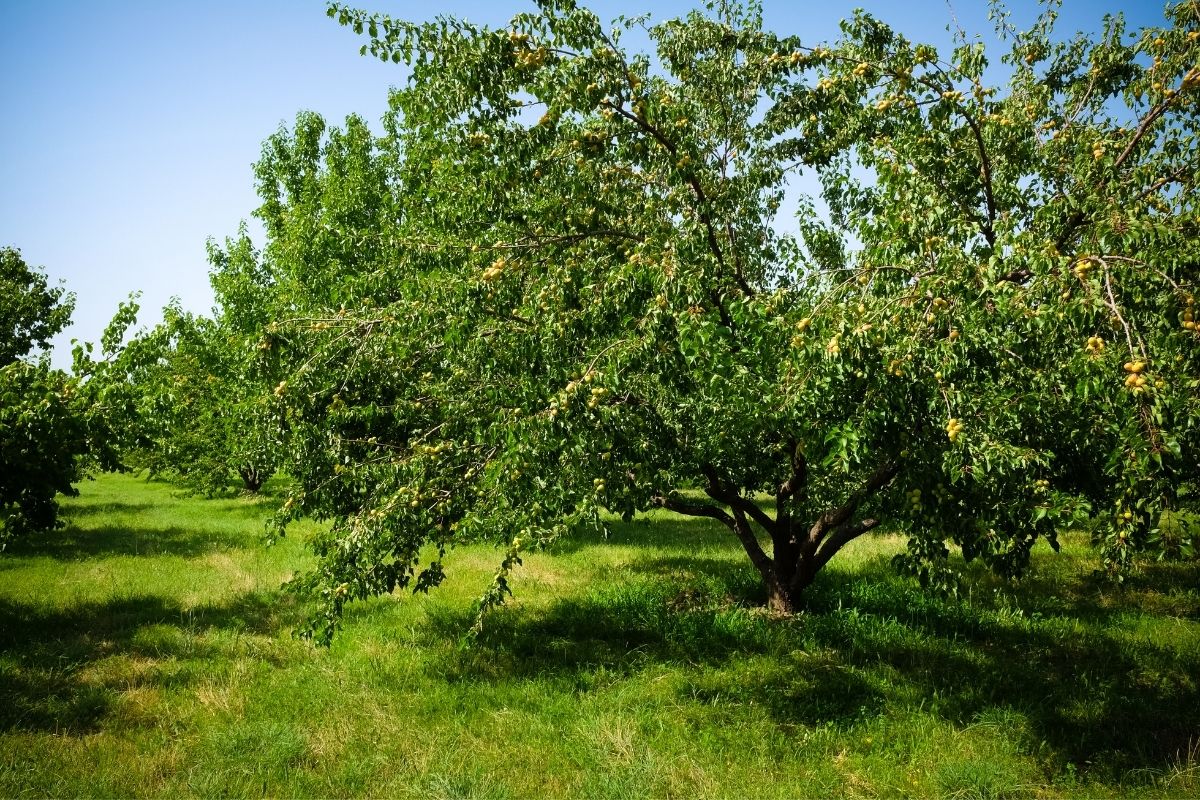
There are thousands of species of tree in the world. Some are incredibly common and native to many different areas, while others are rarer sights in nature.
If we were to list all of the tree species that are out there, you’d probably never get to the end of this article! For that reason, we’ve decided to begin by listing 28 trees that start with A.
From the common Ash tree to less well-known species such as the African Podocarps, there are so many fun facts to discover about trees starting with A.
1. Apple (Malus Domestica)
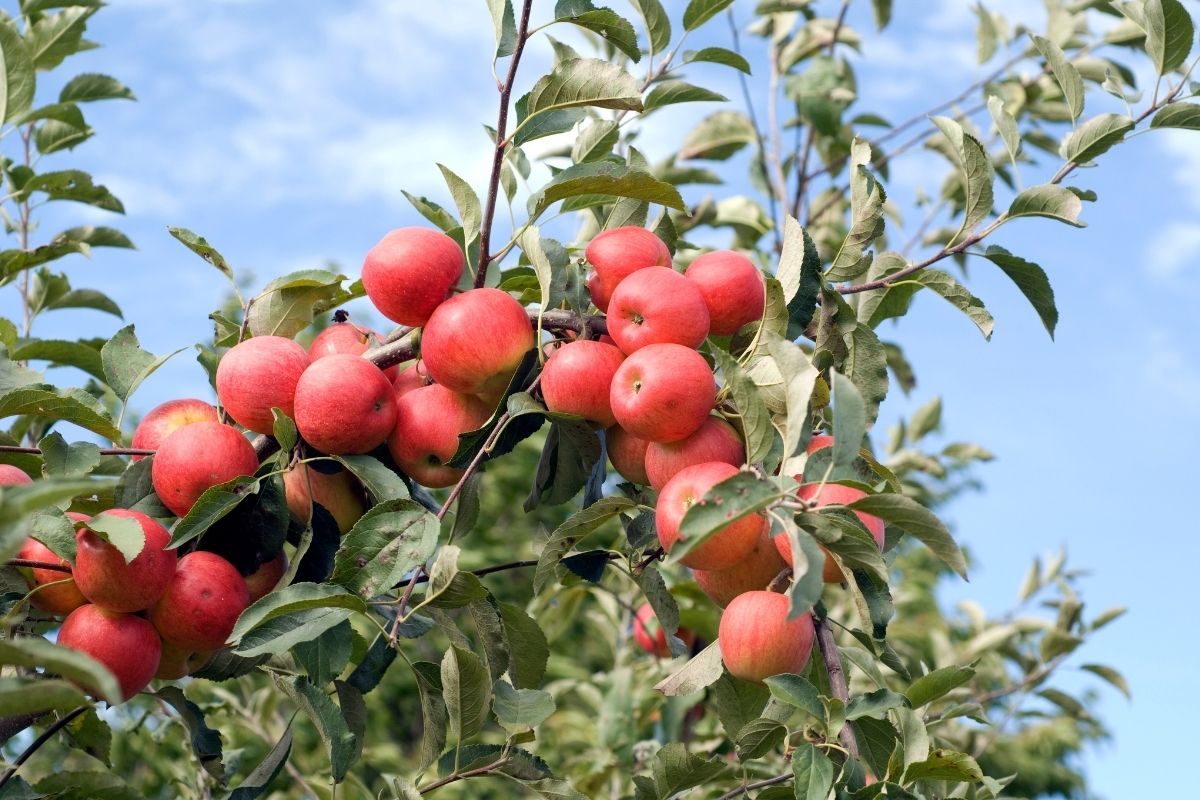
An obvious contender for this list of trees that start with A is the apple tree.
Apple trees originated from Central Asia, but they have now been naturalized in many areas of the world, including Europe and America.
These trees are usually grown in orchards so that the fruit can easily be harvested.
2. Alder (Alnus Glutinosa)
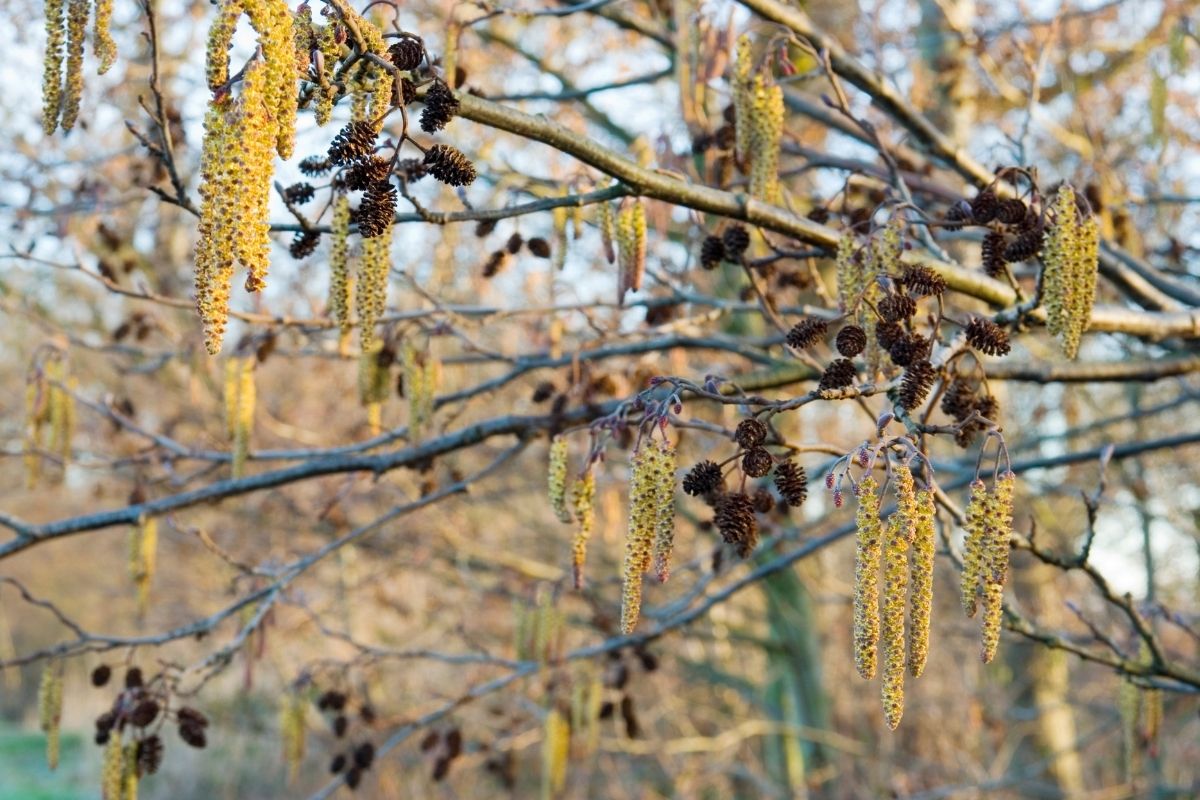
Alder trees thrive in Northern, temperate climates, although you can also spot this monoecious tree in some areas of Central America and the Andes.
These trees have gray bark with white flecks and grow long clusters of flowers called catkins.
RELATED: 13 Different Types Of Russian Trees
3. Areca Palm (Dypsis Lutescens)
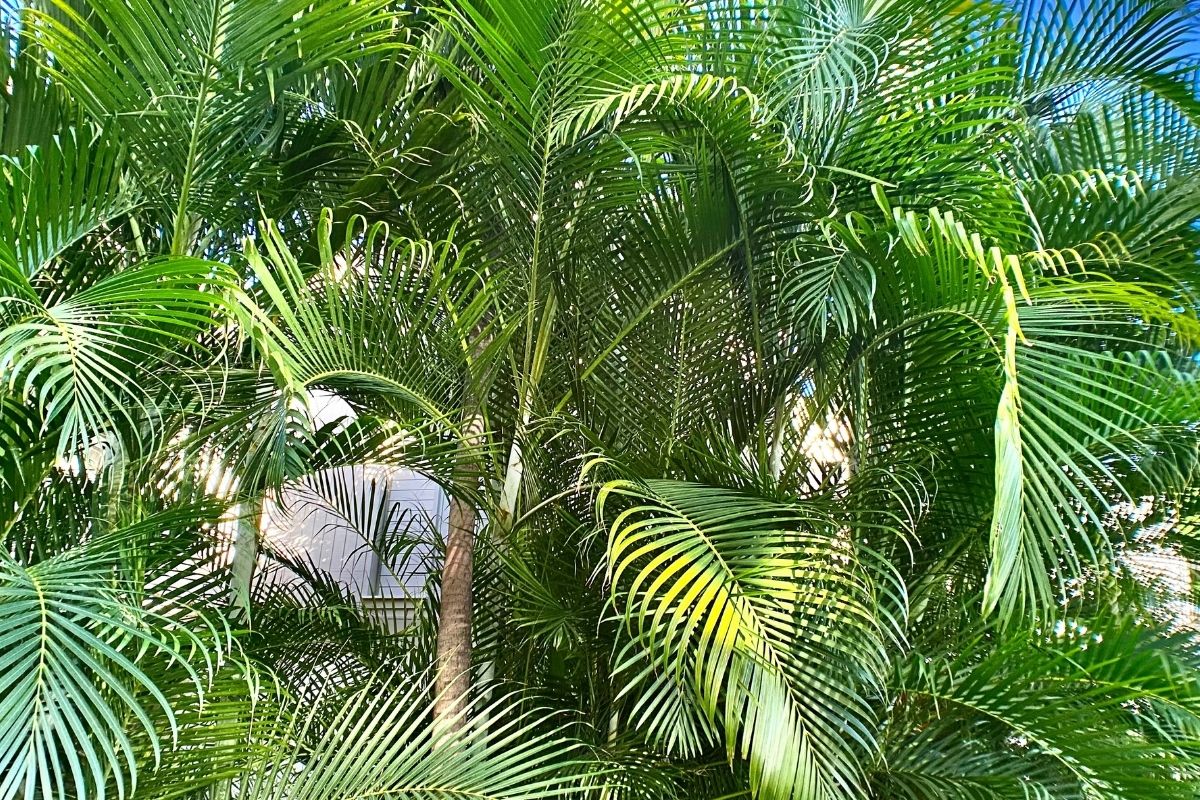
The Areca Palm is a tree species that originally comes from Madagascar.
This small tree is also known as the golden cane palm, and many people choose to grow them indoors because their leaves can absorb common air pollutants.
4. Acacia (Acacia)
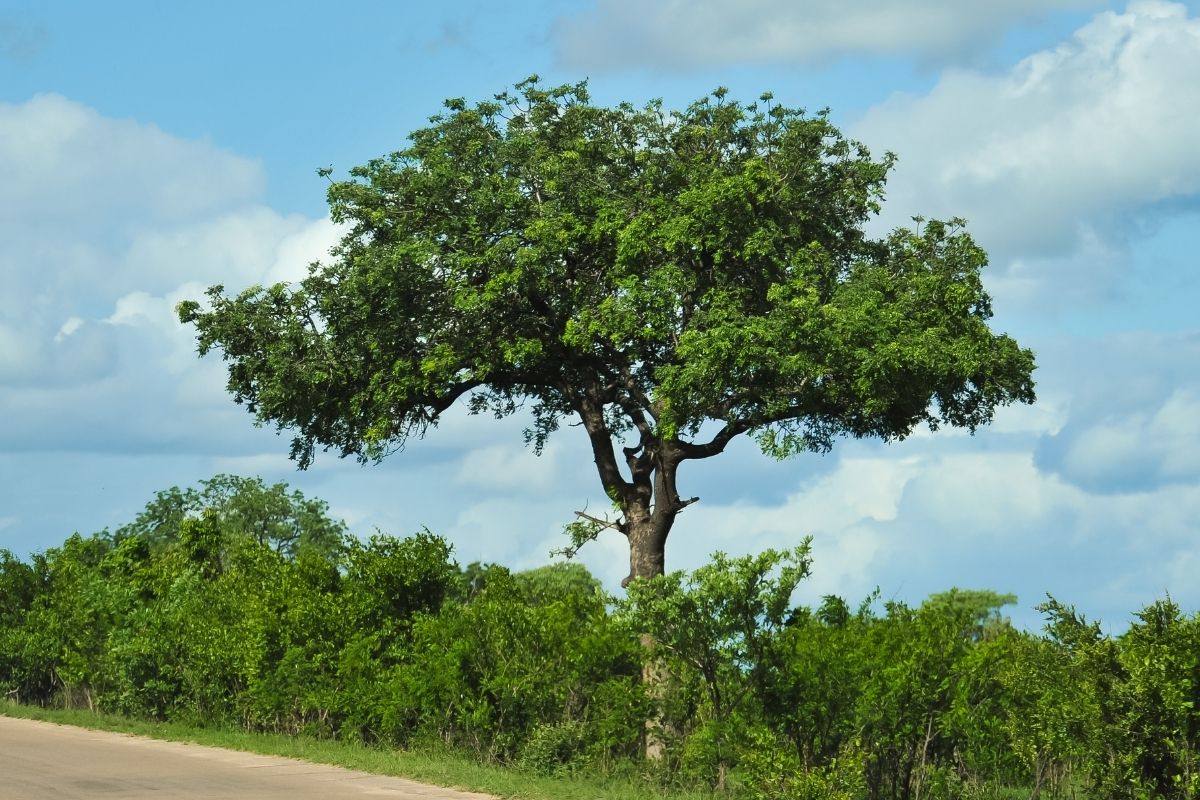
Acacia trees can mostly be found in warm climates such as Mexico, Hawaii, and South America.
However, interestingly, this tree was first discovered in 1773 by a Swedish botanist called Carl Linnaeus.
It is recognizable due to its wide canopy of leaves and yellow flowers.
5. Amborella (Amborella Trichopoda)
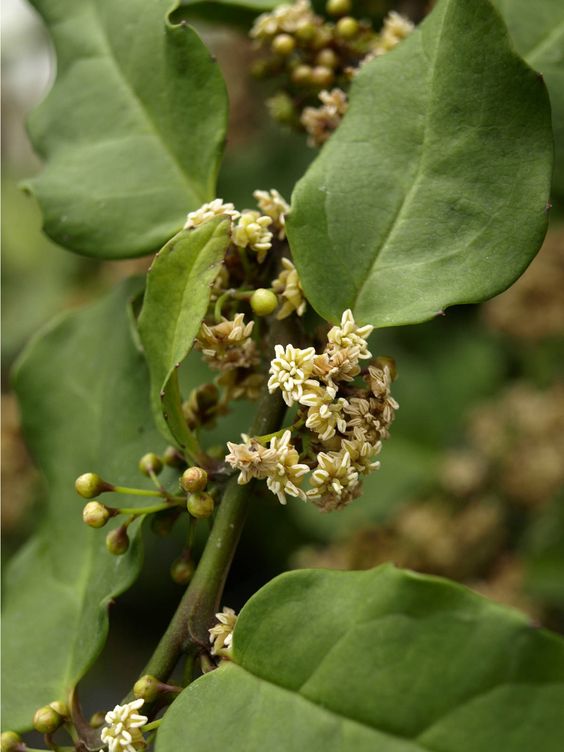
The tree commonly known as Amborella can either be considered a shrub or a tree depending on its size. It can grow up to 8 meters in height and is fairly unique thanks to its rare xylem tissue. Unfortunately, this species is at risk of extinction.
6. African Mahogany (Khaya Anthotheca)
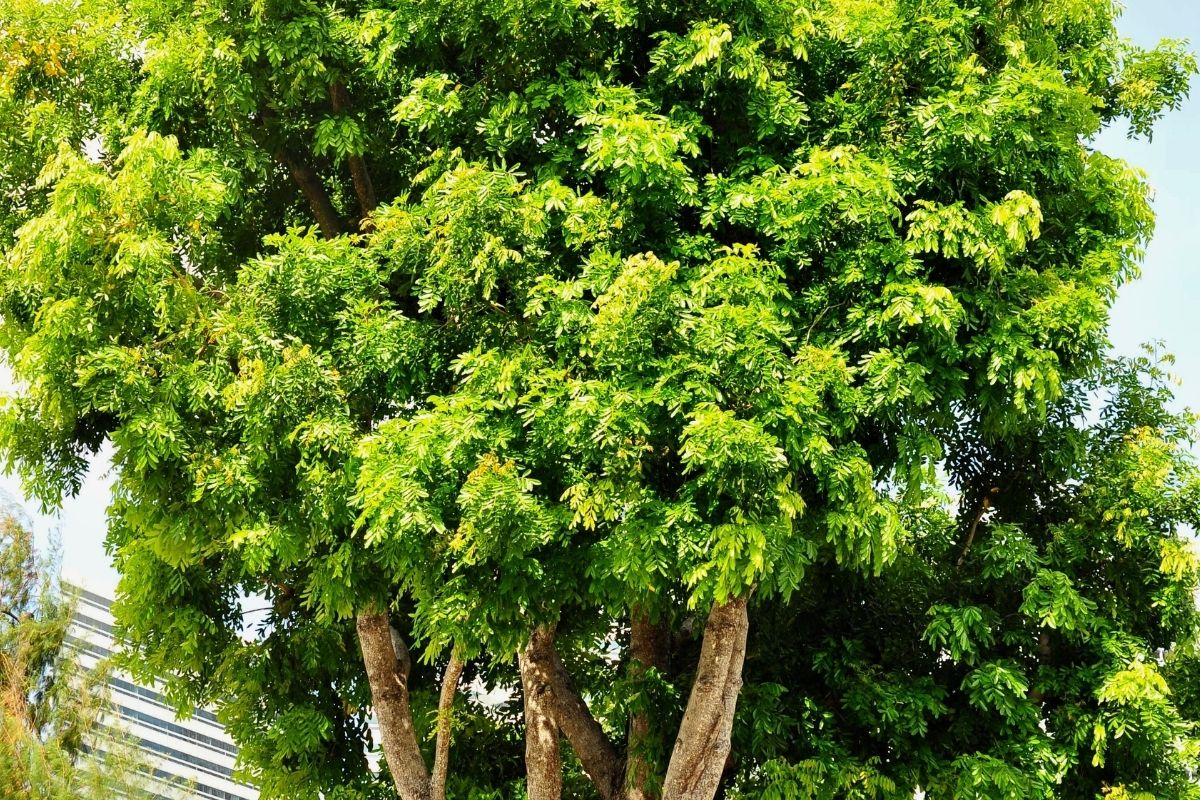
Mahogany is one of the most luxurious and expensive types of wood in the world.
One source of mahogany is the African Maho gany tree, which is also simply known as Khaya. There are actually 3 species within the Khaya genus.
7. Alexandra Palm (Archontophoenix Alexandrae)
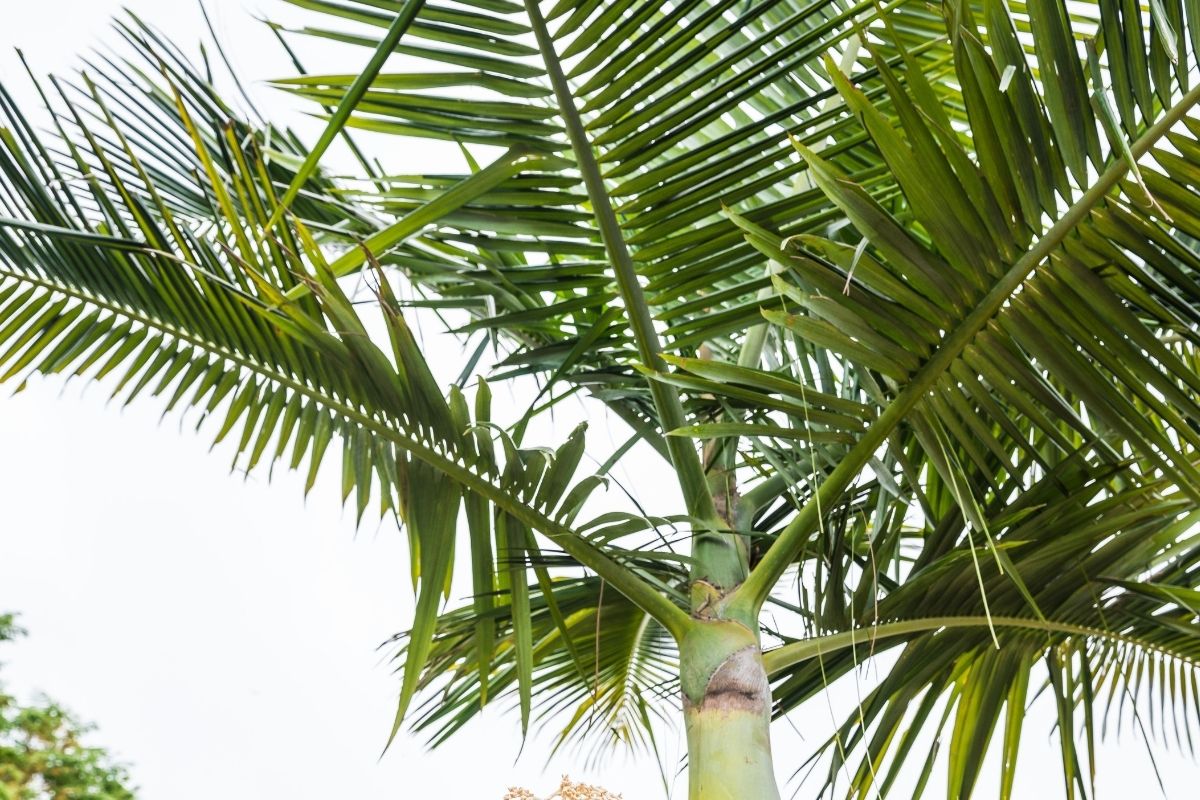
We’ve already discussed the Areca Palm, but have you heard of the Alexandra Palm?
You might also have heard it called by other names such as King Palm or Northern Bungalow Palm. This palm was named after Danish royalty Princess Alexandra.
8. African Podocarps (Afrocarpus Gracilior)

African Podocarps are types of evergreen trees that can also be classified as shrubs if they are on the smaller side. It’s also known as the African Fern Palm.
These trees have dense green foliage that often covers most of the trunk.
9. Alder Buckthorn (Frangula Alnus)
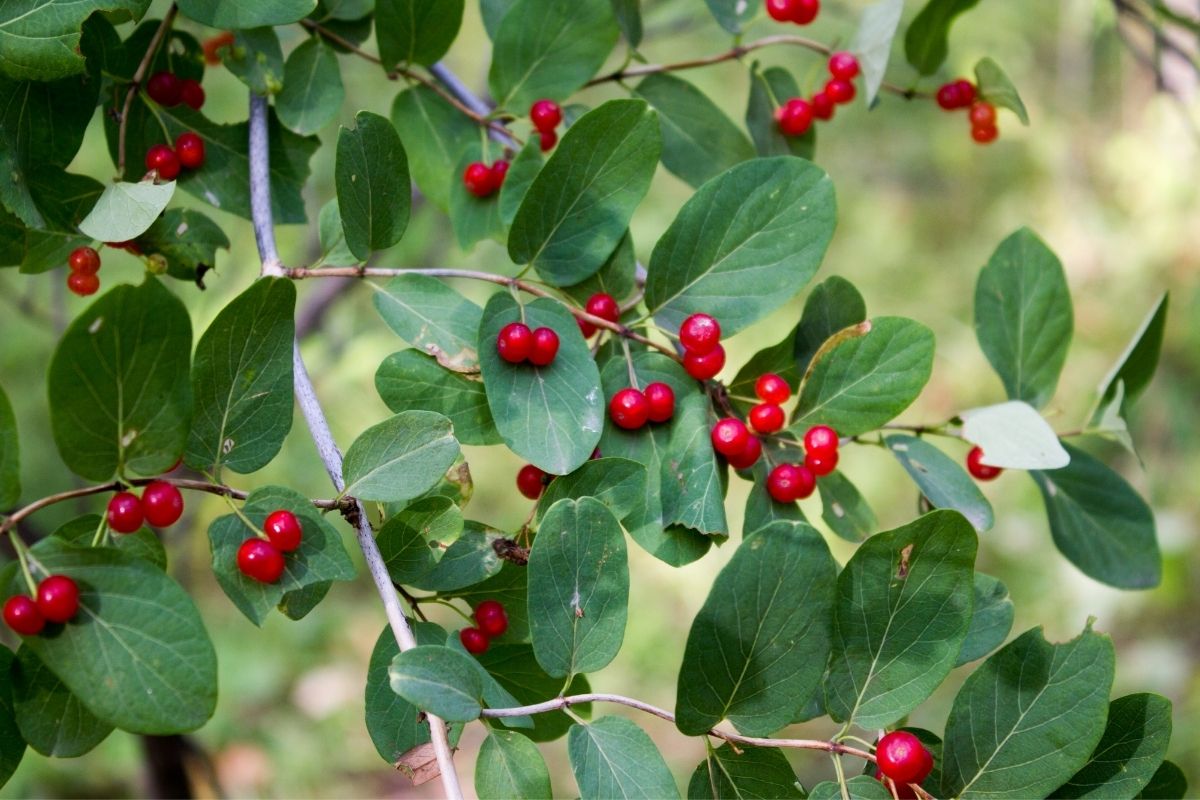
Alder Buckthorn is not a thorny plant, as its name might lead some to assume. Instead, it’s a tree that is sometimes small enough to be considered a shrub. It grows up to 6 meters tall.
An interesting way to recognize Alder Buckthorn is to see if any bits of yellow under the bark are visible through the dark brown bark.
10. Autograph (Clusia Rosea)
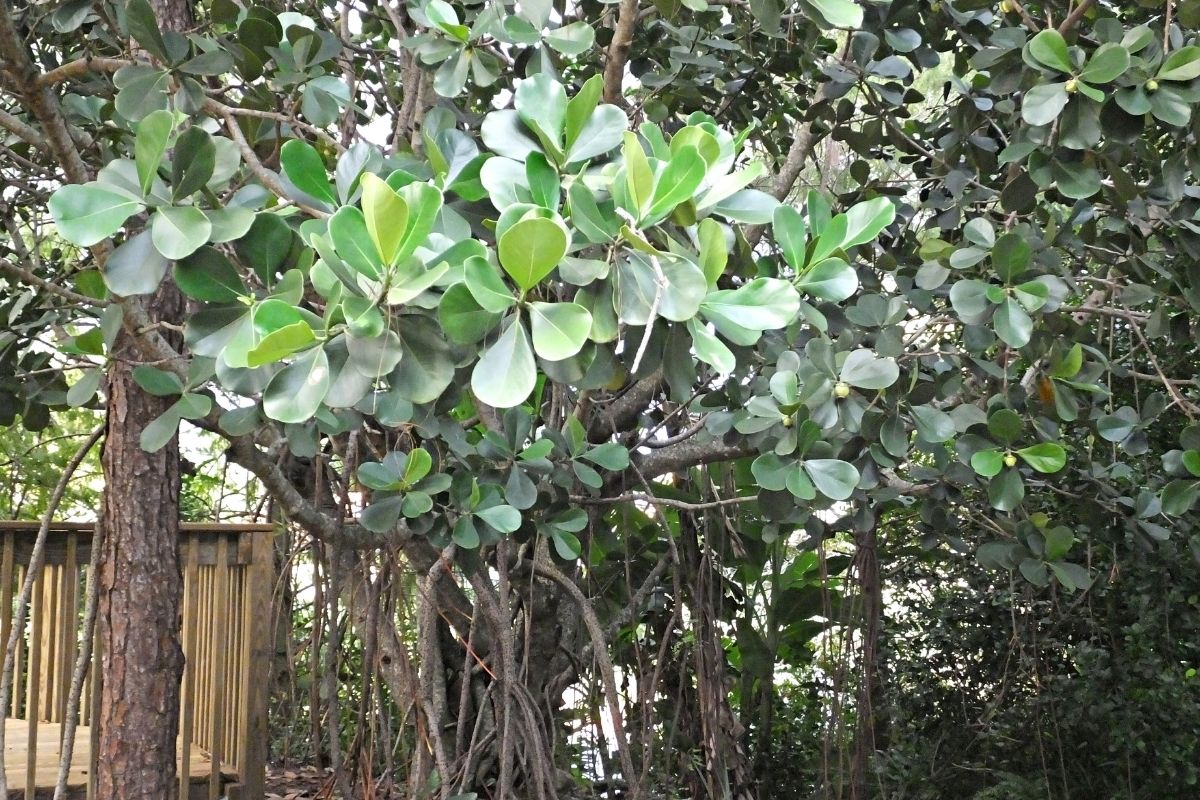
The Autograph tree is a small tree usually grown as an indoor plant. It’s native to Florida, Mexico, and Central America.
The reason this tree is called the Autograph tree is that the leaves are thick enough that it’s actually possible to inscribe words into them!
11. Apricot (Prunus Armeniaca)
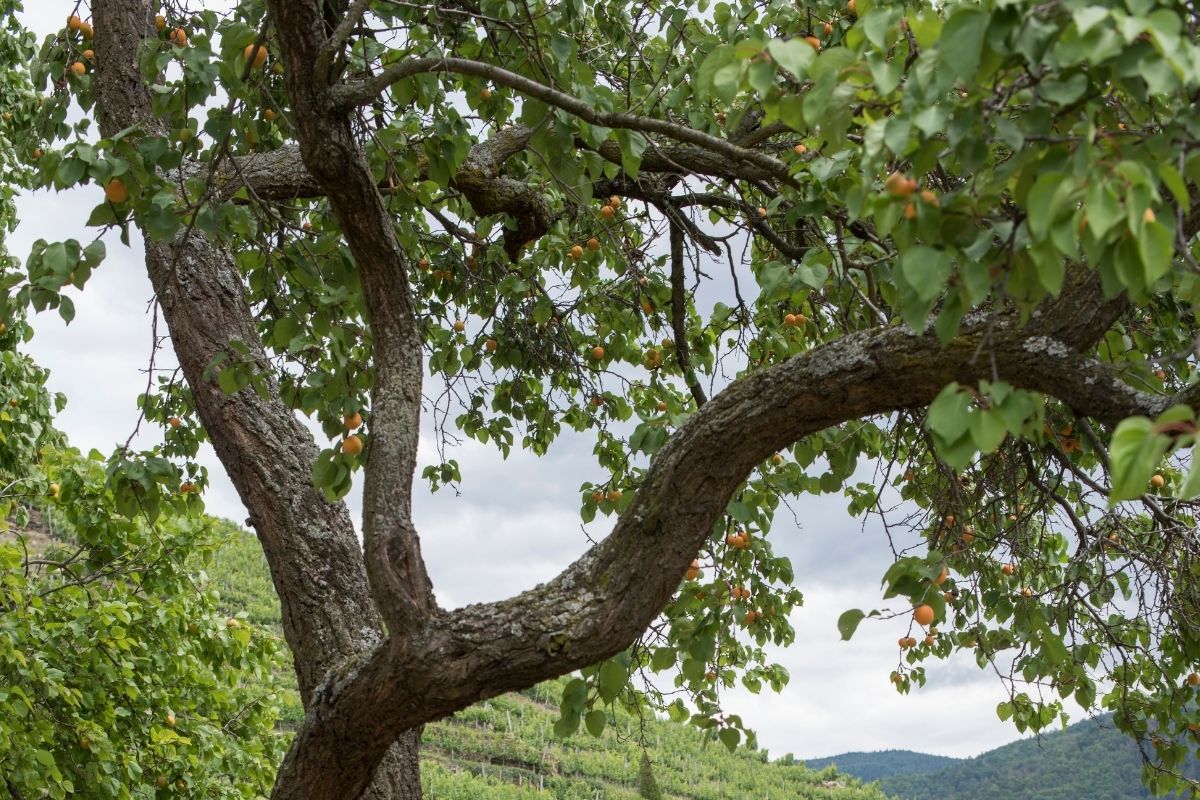
Many people are aware that Apricots grow on trees, but how much do you know about Apricot trees? Apricot trees are native to Asia.
They are small trees with bright green, oval foliage that contrasts beautifully with the orange-peach-colored fruit.
12. Acerola (Malpighia Emarginata)
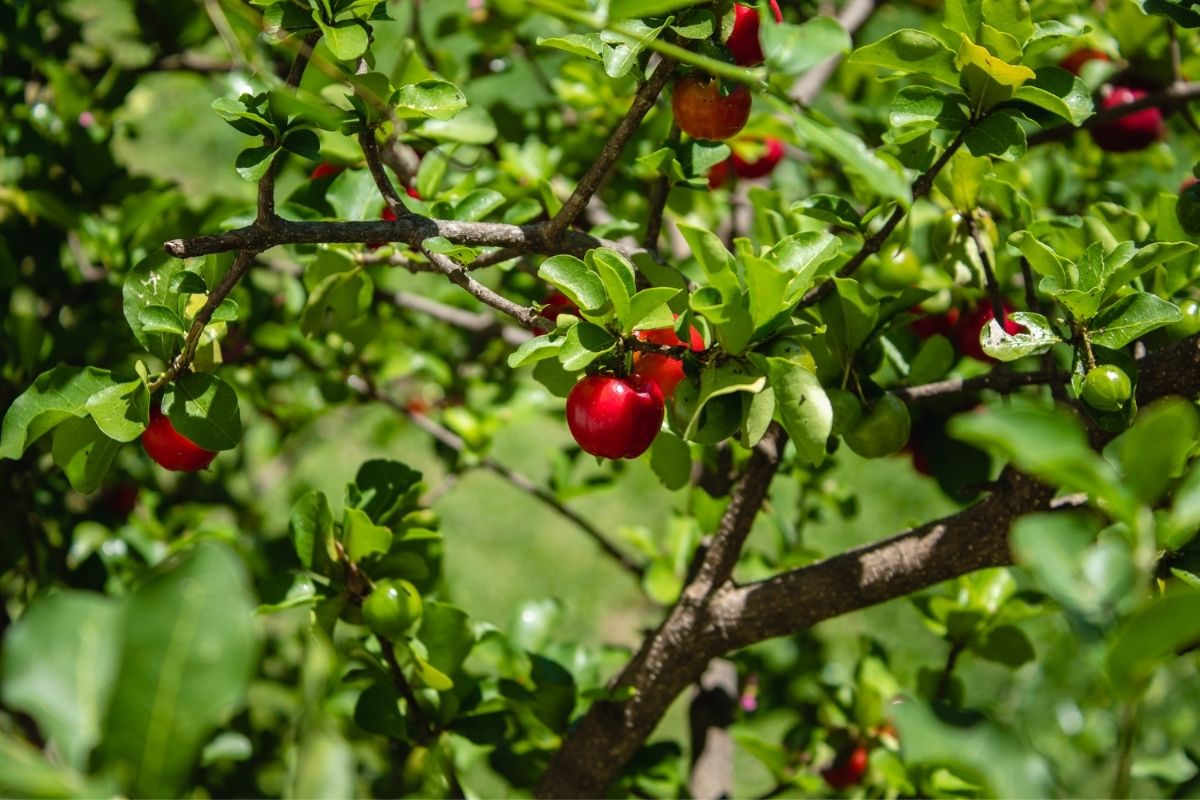
Acerola, also called Barbados Cherry Trees, are exactly what their second common name suggests – cherry trees that are native to tropical areas, including South America and Mexico.
The cherries that grow from this tree are especially high in vitamin C.
13. Albizia (Albizia Julibrissin)
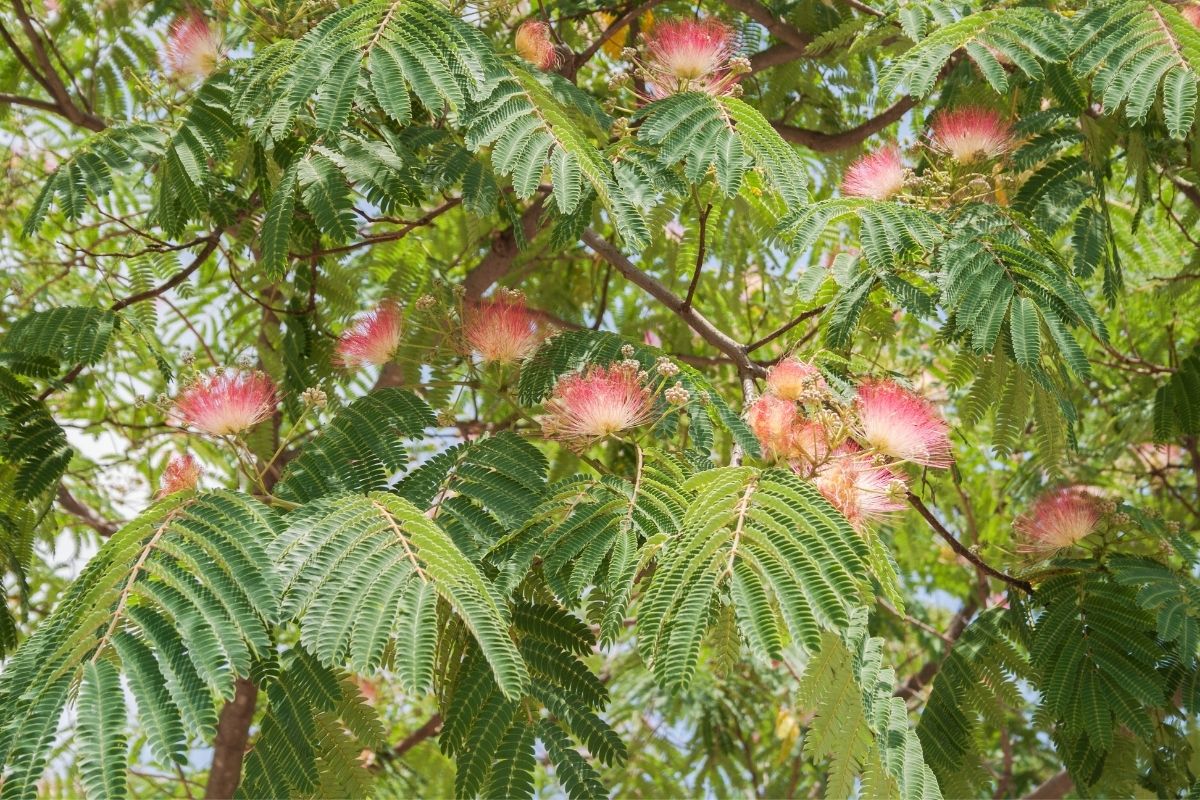
The Albizia tree is native to Eastern and Southeastern Asia, but it has become more common in Europe since the 18th century when it was introduced by Filippo degli Albizzi.
Despite how impressive this tree looks, it’s actually considered an invasive weed in the United States because of how fast it spreads.
14. African Rosewood (Hagenia Abyssinica)
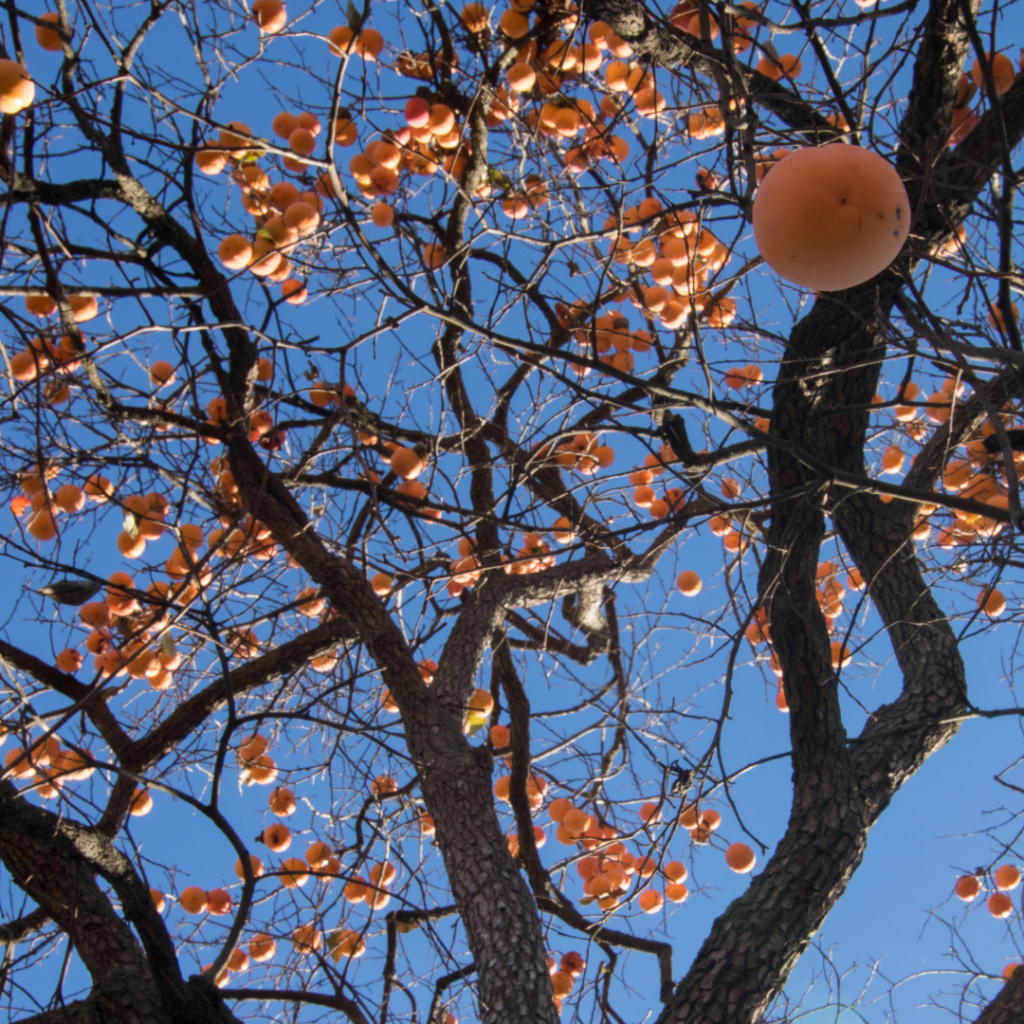
African Rosewood is an African legume tree that is native to several countries including Cameroon, the Republic of Congo, Equatorial Guinea, and Gabon.
This is an endangered genus despite the fact that there are about 300 species of African Rosewood in the world.
15. Anise (Illicium Parviflorum)
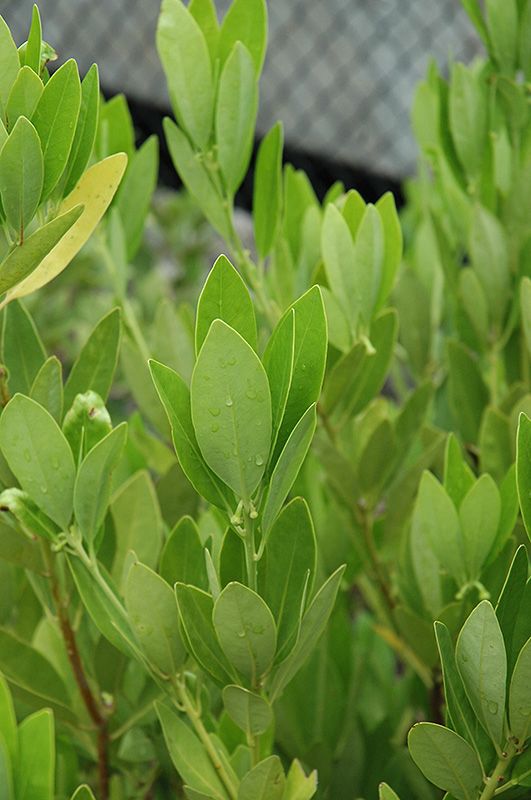
The Anise tree is where anise seeds come from. These seeds are known for their anti-inflammatory or anti-fungal properties.
The tree itself is herbaceous and native to the Mediterranean and the Middle East.
16. African Tulip (Spathodea Campanulata)
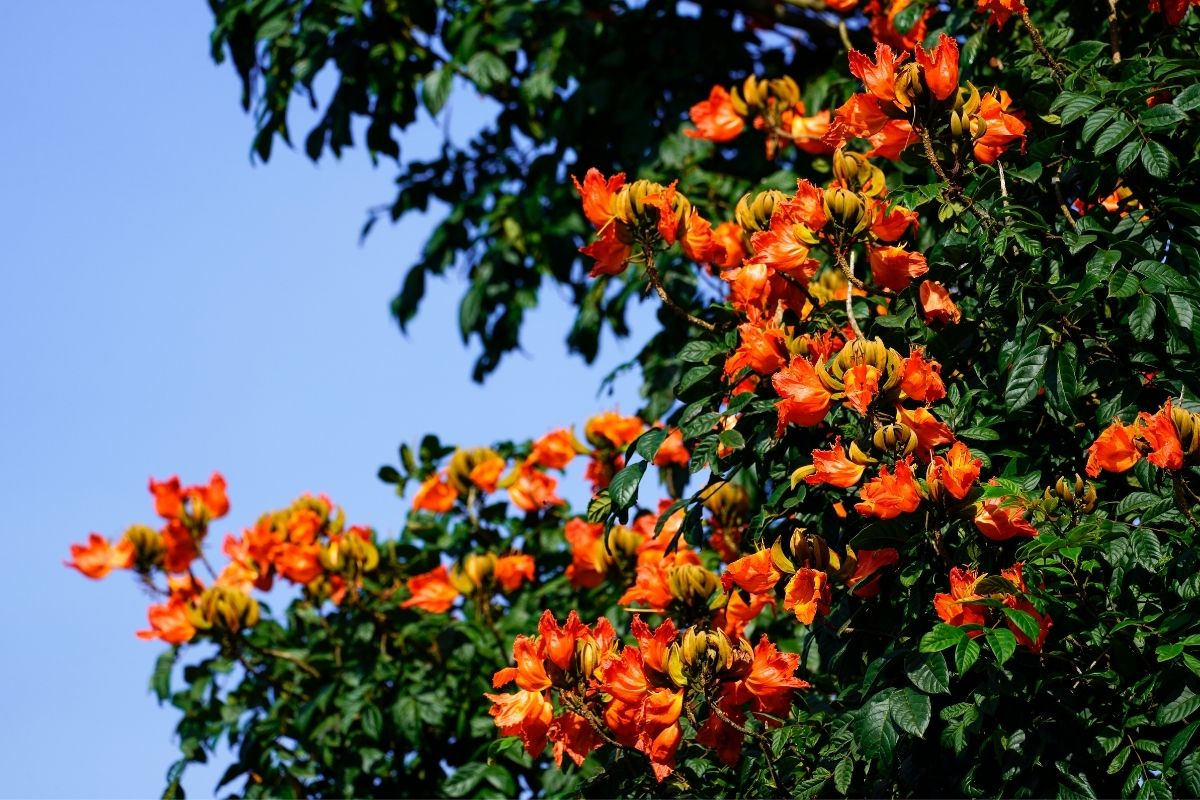
African Tulip trees are some of the most stunning plants in the world, in our opinion.
The dark green foliage and bright orange-red tulip-like flowers make this tree visually stunning. You can find it growing in tropical regions of Africa.
17. Almond (Prunus Dulcis)
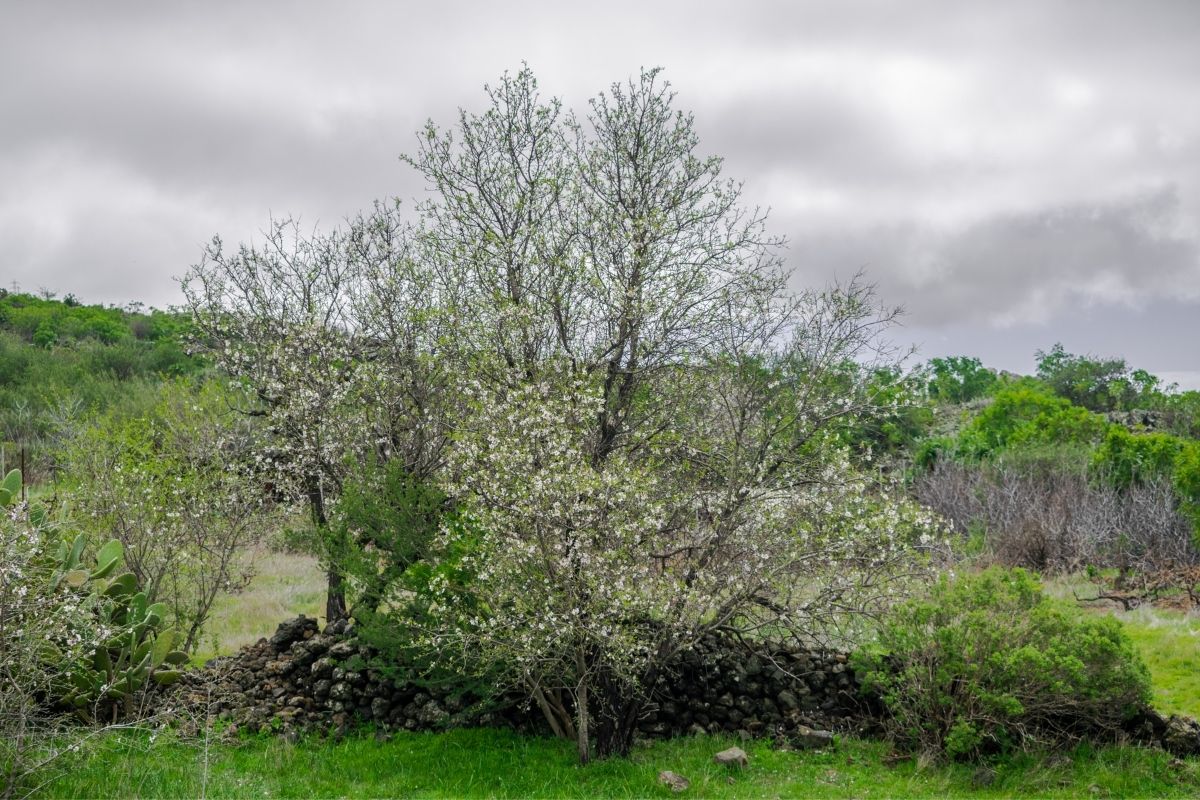
Almonds are delicious, so we should all thank Prunus Dulcis for providing us with this healthy, filling snack!
Almond trees are native to Iran but have been naturalized elsewhere, and many other countries cultivate these trees for almond production.
18. Acai Palm (Euterpe Oleracea)
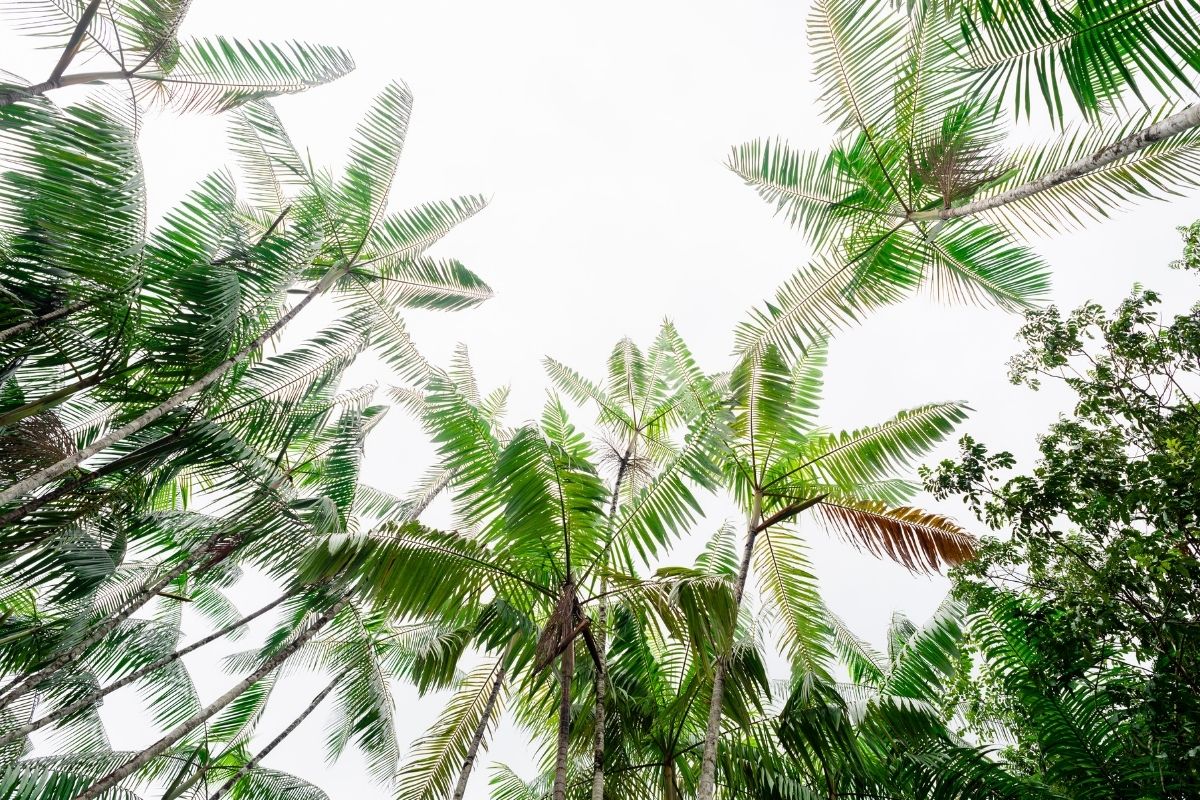
If you’ve ever wondered where Acai berries come from, they grow from the Acai Palm.
Acai Palm trees are not only cultivated for their fruit, which is known to assist weight loss and lower cholesterol, but also for their trunk wood.
19. Avocado (Persea Americana)
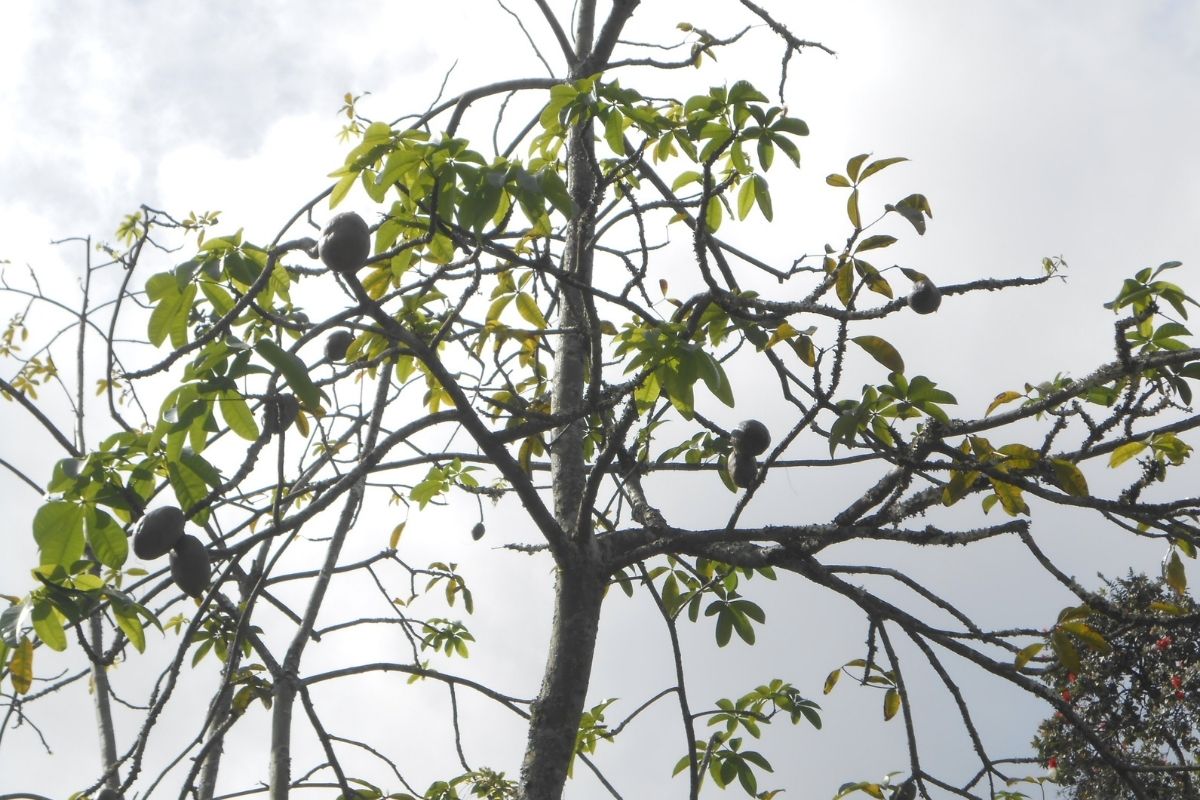
Avocado trees are thought to originate from Central or South Mexico, although the verdict is still officially out on the origins of this tree.
Regardless, avocado trees have become popular in other areas because of their healthy fruit, and some people even grow them as house plants.
20. Ash (Fraxinus Excelsior)
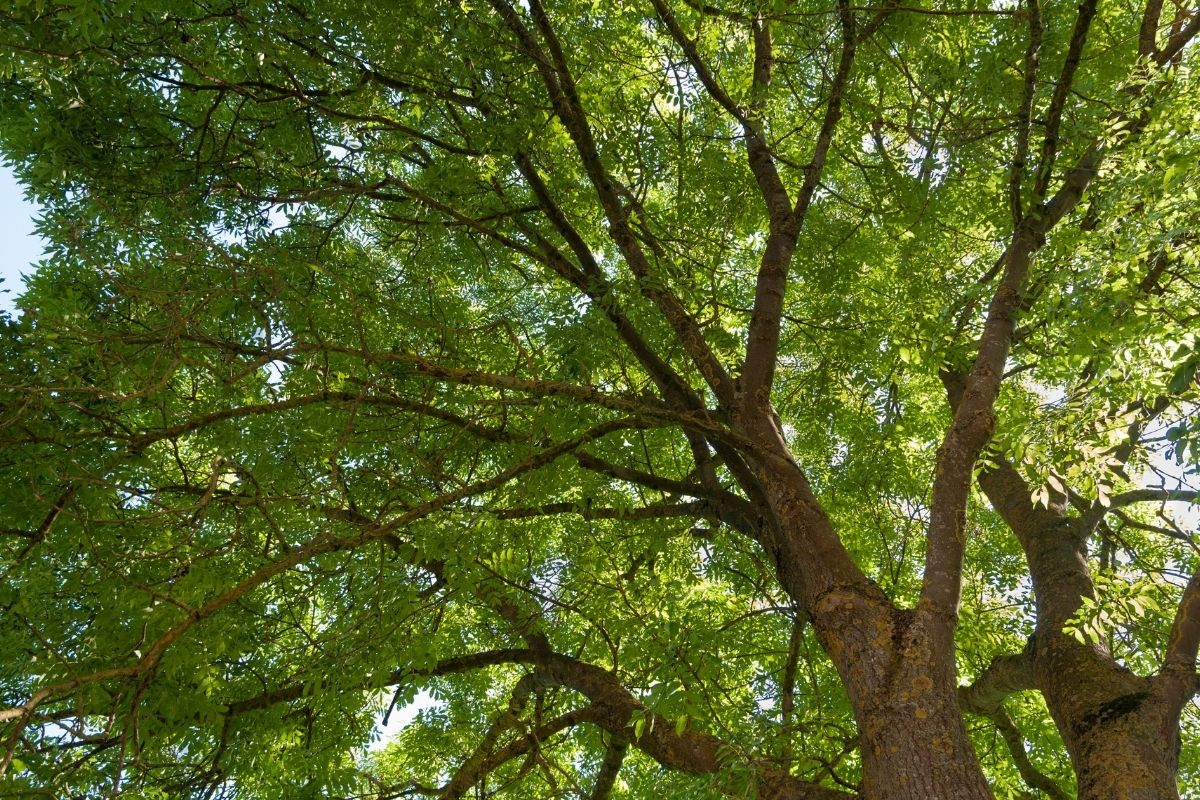
You’ve probably heard of the Ash tree before because it’s so widespread. It grows in various parts of Europe, North America, and Asia.
Part of the reason Ash trees are so widespread is that there are between 45 and 65 species of this tree growing in nature.
21. African Oil Palm (Elaeis Guineensis)
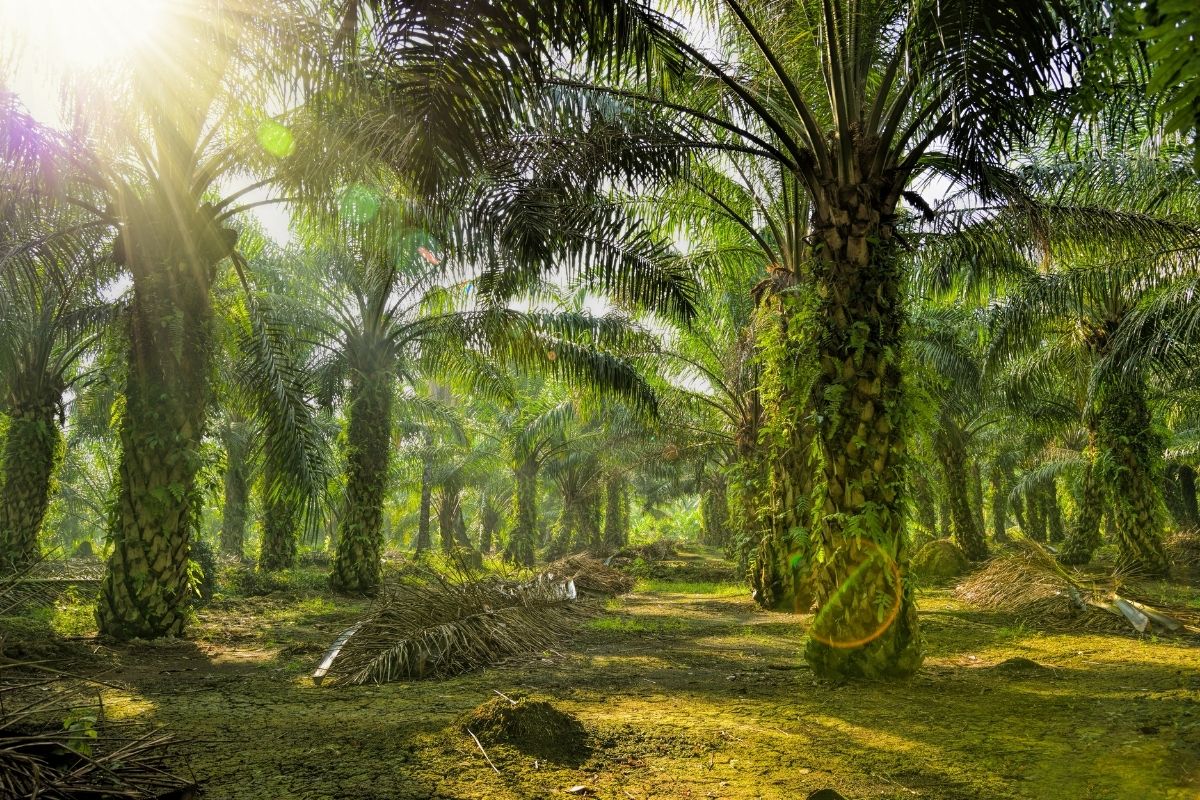
African Oil Palm trees are native to West Africa and are a primary source of the palm oil we find in many food products.
This tree also grows easily in other parts of the world that have tropical climates, which means that African Oil Palm is cultivated widely.
22. Arborvitae (Thuja Occidentalis)
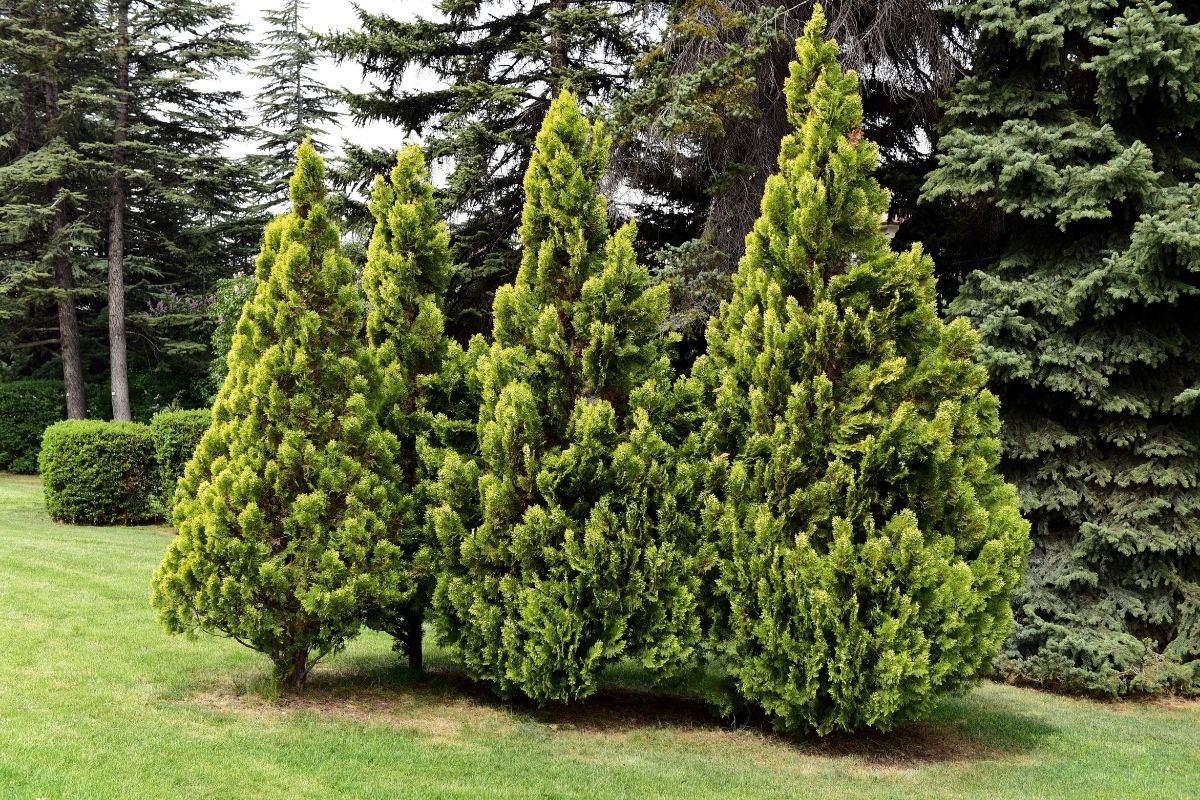
Arborvitae is a highly versatile tree genus, consisting of 5 species. Two of these species are native to America, while the remaining 3 grow in Asia.
These are coniferous trees, and they are easy to identify because of their pointed, conical shape.
23. Angelica (Aralia Elata)
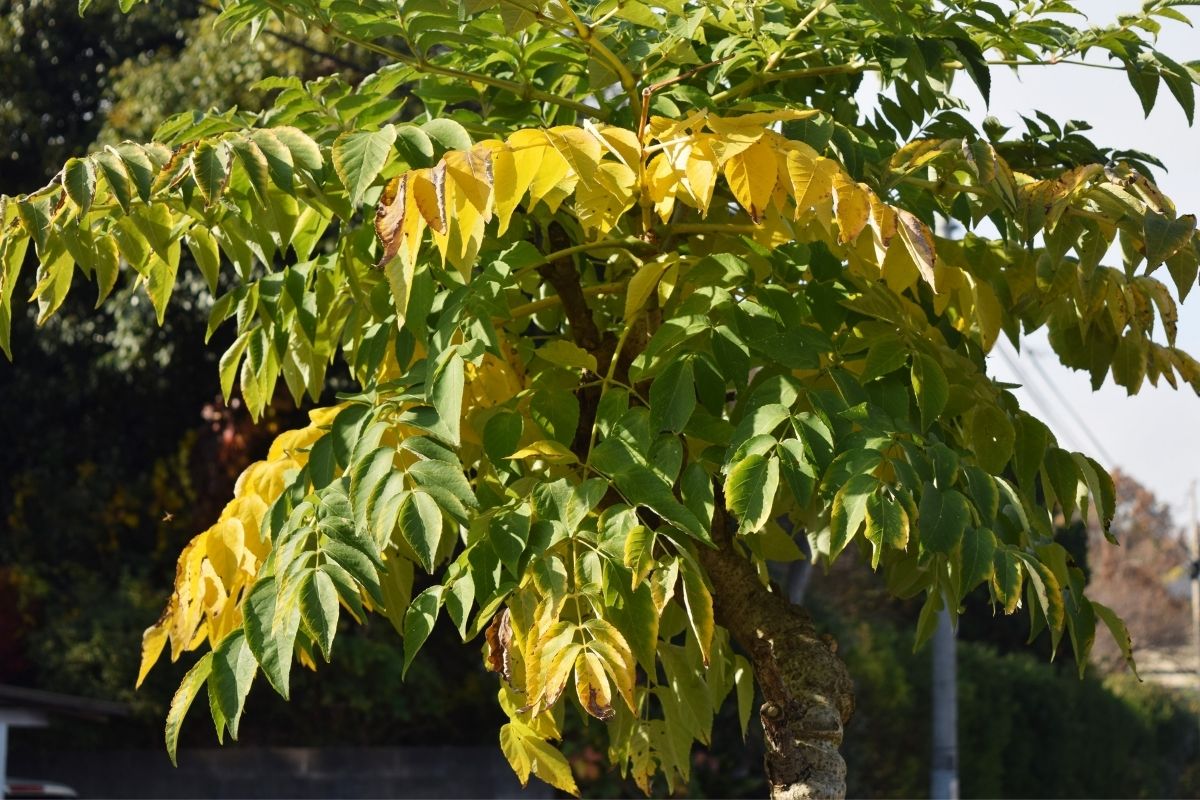
Angelica trees are native to Japan.
They have delicate, decorative foliage which makes them a great choice if you’re looking for a large, ornamental tree.
The foliage of the tree forms a round shape, and you can find it in some areas of East Asia.
24. Axlewood (Anogeissus Latifolia)
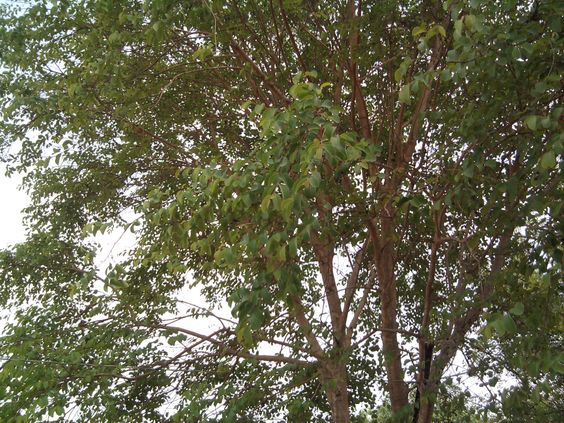
Axlewood is native to Nepal, India, Sri Lanka, and Myanmar. Decorated with clusters of yellow flowers, this tree is nice to look at, but it also has important medicinal uses.
The bark can be made into a paste to treat swelling and wounds or made into a decoction for gastrointestinal issues.
25. Alexandrian Laurel (Calophyllum Inophyllum)

Alexandrian Laurel is an evergreen plant that can grow large enough to be easily identified as a tree. It grows in warm or tropical areas, including Australia and East Africa.
Its yellow flowers, which eventually turn into yellow or red berries, make it a popular ornamental tree.
26. Aspen (Populus Tremuloides)
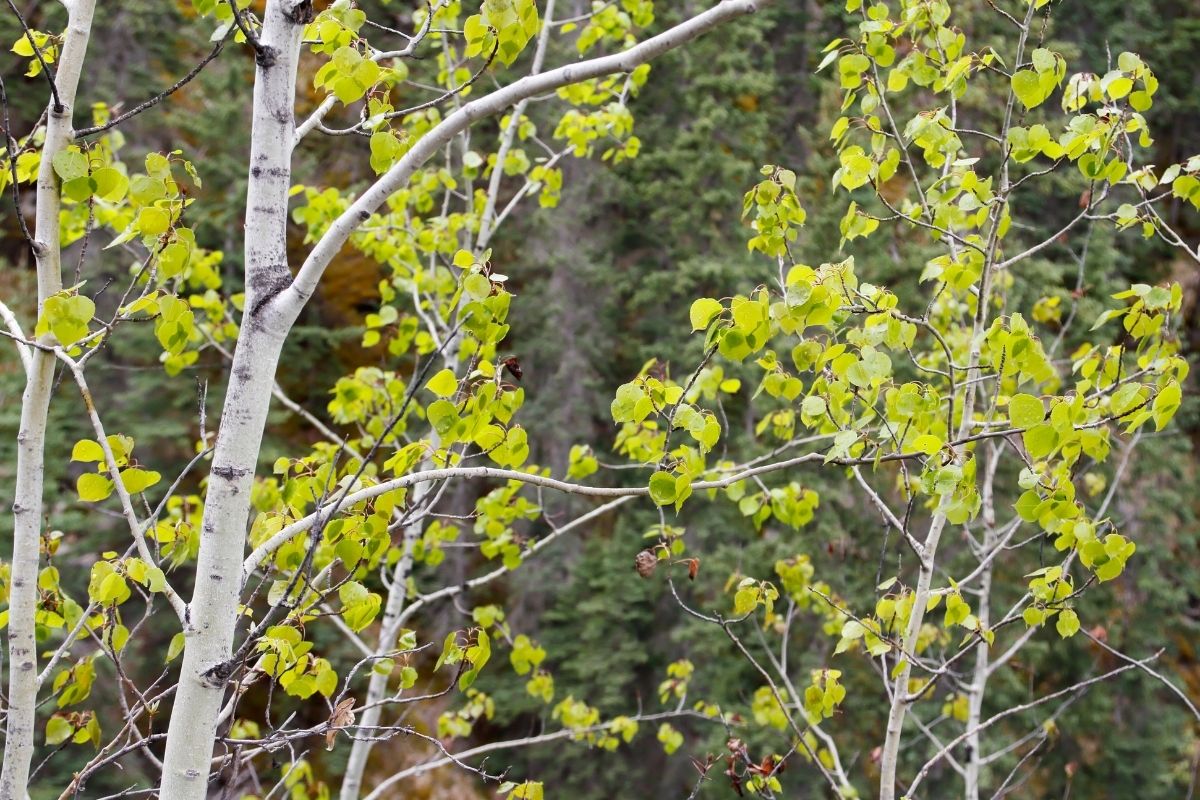
Aspen trees are mainly cultivated for their wood, which has various uses.
The wood is appealing because it is white and very resistant to wear and tear, so many people like to use it for making oars and building modes of transportation like wagons.
27. Abyssinian Banana (Ensete Ventricosum)
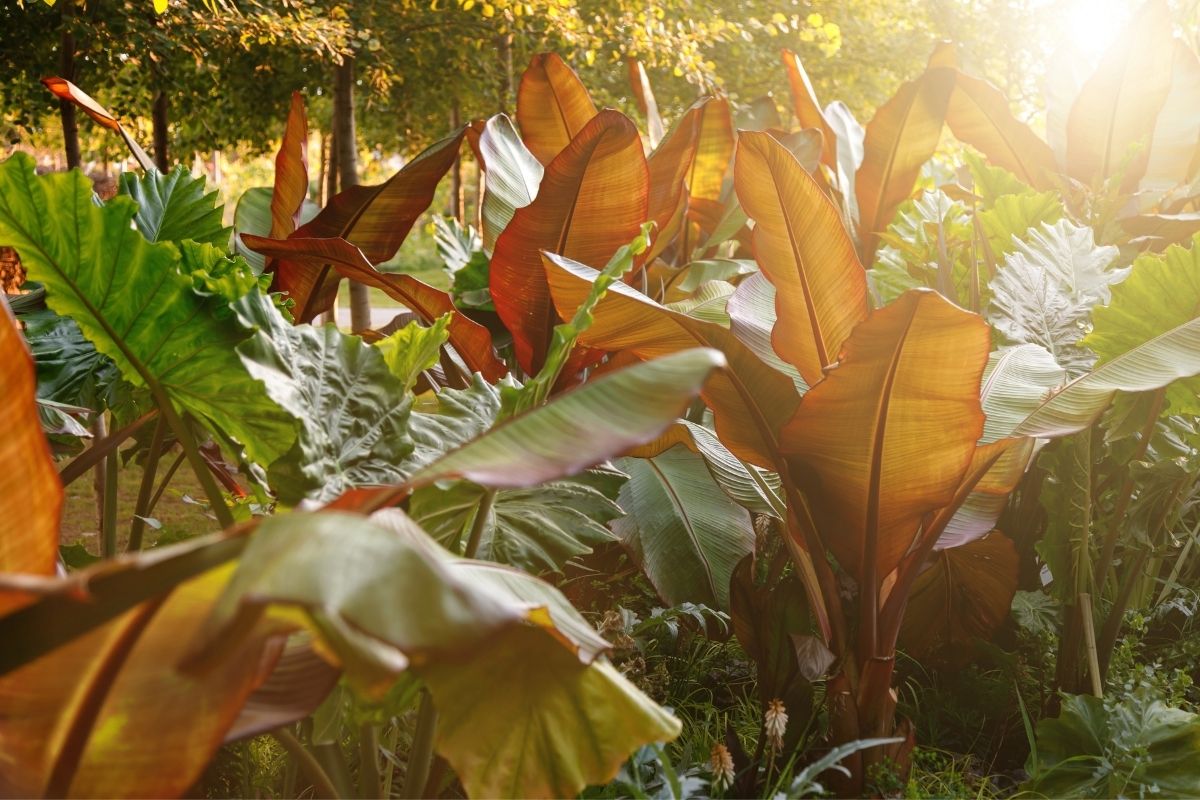
Finally, we’d like to introduce you to the Abyssinian Banana tree. Abyssinian Banana trees are herbaceous trees and members of the banana family.
However, it’s important to note that the fruit that grows from this tree (sometimes called false banana) is not edible.
Final Thoughts
There are plenty of trees beginning with A, and we certainly haven’t listed every single one in this article, but hopefully, this article has given you an idea of just how many there are.
If you’re searching for trees beginning with A because you want to grow one yourself, make sure you research the genus or species beforehand and find out what growing conditions it prefers and whether any parts of it are toxic.
Editor’s Recommendations
The Golden Guide To Gold Trees: 17 Types Of Gold Trees
Nature is Truly Delightful! 10 Different Types Of English Trees







